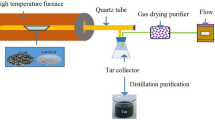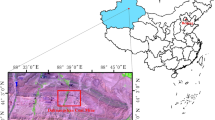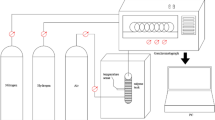Abstract
IN NATURE of Dec. 4, 1926, p. 805, which has only recently come to my knowledge, I find a notice by Messrs. G. T. Morgan and D. D. Pratt which interests me greatly, because it contains a confirmation of an observation which I made and published some years ago (Berichte der Deutschen Chemischen Gesellschaft, 39, 1238 ; 1906). It concerns the occurrence of β-methylanthracene in low temperature tars from certain coals. I have already demonstrated this for three poor (‘magere’) coals, that is, geologically old Westphalian coals, with a coke content of 82 percent.—at the same time the yellow hydrocarbon, crackene, was isolated—and it may well be supposed that the coal employed by Messrs. Morgan and Pratt displays a similar character. That β-metbylanthracene is indeed concerned, I have already proved in a similar manner to Morgan and Pratt by the oxidation product of the hydrocarbon. More recently I have arrived at this proof by another way (Berichte der Deutschen Chemischen Oesellschaft, 59, 2812; 1926),1 which, however, leads to the same result, namely, the preparation of a double compound of the hydrocarbon with β-dinitroanthraquinone (Fritzsche's Reagent).
This is a preview of subscription content, access via your institution
Access options
Subscribe to this journal
Receive 51 print issues and online access
$199.00 per year
only $3.90 per issue
Buy this article
- Purchase on Springer Link
- Instant access to full article PDF
Prices may be subject to local taxes which are calculated during checkout
Similar content being viewed by others
Author information
Authors and Affiliations
Rights and permissions
About this article
Cite this article
BÖRNSTEIN, E. The Constituents of Low Temperature Tar. Nature 121, 356–357 (1928). https://doi.org/10.1038/121356b0
Issue Date:
DOI: https://doi.org/10.1038/121356b0
Comments
By submitting a comment you agree to abide by our Terms and Community Guidelines. If you find something abusive or that does not comply with our terms or guidelines please flag it as inappropriate.



